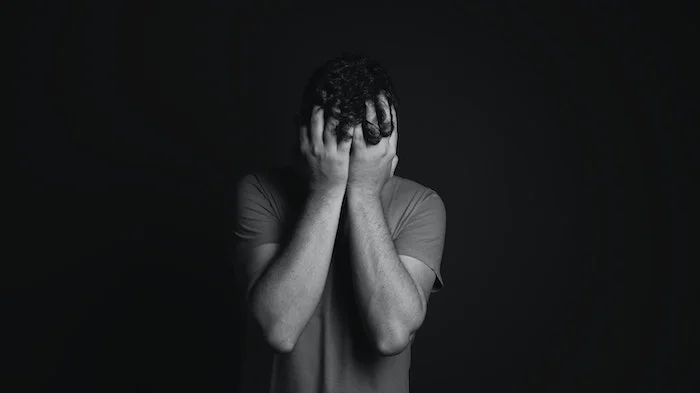- Home
- Drug Rehab
- Cocaine Rehab
Cocaine Rehab
Cocaine is a psychoactive drug, primarily used by recreational users seeking to experience positive psychological and physical effects.
Cocaine is obtained from the leaves of the coca plant and usually comes in white powder form although it is chemically possible to synthesise it into crystals or rocks and produce a form known as crack cocaine.
Crack cocaine is renowned for eliciting a higher level of pleasure for users but this also means that it can be more addictive and more harmful, both physically and mentally. (6,13)
Cocaine is also known as blow. coke, crack, rock or snow. People who take cocaine have the option to snort, smoke or inject the drug.
Cocaine is usually sold in a white powder or synthesized into crystals or rocks as “crack.”
Snorting, smoking or injecting the drug elicits a brief euphoric, energizing, and exhilarating feeling that lasts a few minutes to an hour, followed by an unpleasant comedown. (12,13)
Motivations for Cocaine Use

Cocaine is a stimulant drug that boosts many aspects of our central nervous system, it provides users with many physical and mental benefits including:
- Elevates mood and produces feelings of euphoria.
- Enhances concentration and improves focus.
- Delays the need for sleep.
- Suppresses appetite. (10,13)
Physical consequences/symptoms associated with cocaine use
- Tachycardia or bradycardia (Irregular cardiac activity).
- Chest discomfort.
- Dilated pupils.
- Blood pressure is at risk of being too high or too low.
- Increase sweating and chills.
- Nausea or vomiting.
- Potential weight loss.
- Restlessness and anxiety.
- Psychomotor retardation (a reduction in the potential to engage in mental and physical activity.
- Muscular weakness.
- Respiratory depression.
- Confusion, seizures, and entering a coma. (5,10,13)
Other consequences of cocaine addiction
As well as causing people unpleasant physical symptoms, heavy cocaine use can also lead to a deterioration in a user’s psychological, personal and social functioning, such as:
- A decline in their mood and emotional state. They may become angrier, and more aggressive or show signs of depression.
- Those close to them may notice a change in their personality.
- A loss of interest and enthusiasm in social and leisure activities and in spending time with friends and family.
- A drop in their motivation for causes/life goals they were previously committed to.
- Display poor judgement/decisions making.
- A decline in their work or academic performance. (10,12)
Diagnosing Cocaine Addiction (also known as Stimulant Use Disorder)

To accurately diagnose a patient with cocaine addiction medical professionals will refer to the following DSM5 criteria which include the following symptoms:
- The patient’s cocaine use has increased significantly and they have been taking the drug for longer than they intended to.
- The patient has been unable to control their behaviour and despite many attempts hasn’t managed to stop, or reduce their cocaine consumption.
- A large proportion of the person’s daily life is taken up obtaining cocaine, using the drug, or recovering from the effects of its use.
- The person experiences strong cravings to take cocaine.
- Their preoccupation with cocaine has meant they have failed to carry out important daily tasks related to work, education or family commitments.
- They have stopped or limited recreational and social activities that they previously found interesting and were committed to since they increased their cocaine use.
- Increased tolerance to cocaine, identifiable by the fact that they need to take higher doses of the drug to experience its desired effects.
- Withdrawal symptoms are experienced when consumption of the drug is ceased.
- Their cocaine use has continued despite the realisation that it has caused them problems in their social and personal lives.
- They take cocaine even though there may be serious consequences for themselves and others. For example, driving under the influence of cocaine.
- The person carries on taking cocaine even though they are aware their cocaine use has led to them developing physical or mental difficulties or has made pre-existing conditions worse. (2)
Categories of cocaine addiction (stimulant use disorder)
The higher the number of diagnostic criteria a person meets, the greater the severity of their addiction. Usually, medical/psychiatric assessors will diagnose a person who meets 6 or more of the criteria with severe stimulant use disorder.
If 2 or 3 of the criteria are relevant to a person’s circumstances then they will be diagnosed with a mild stimulant use disorder, whereas meeting 4 or 5 of the criteria will lead to them being classified as having a moderate stimulant use disorder.
Establishing the severity of their addiction is important as it helps treatment centres devise a suitable treatment plan for the client. (2)
Cocaine Withdrawal Symptoms

An important part of the diagnostic process for cocaine addiction involves establishing if regular users of cocaine experience withdrawal symptoms when they go for 6 hours or longer without taking the drug.
Common withdrawal symptoms for cocaine addiction include:
- Easily tired/Fatigue.
- Experiencing vivid and unpleasant dreams.
- Sleep disturbances such as Insomnia or hypersomnia.
- An increase in their appetite.
- A slowing down of physical and mental activities (known as psychomotor retardation).
- Irritability/agitation. (2,10)
Rehab Treatment for Cocaine Addiction.
Treatment for cocaine addiction encompasses many areas, all of which have been established in research as being valuable in helping people recover from cocaine addiction and in ensuring that any recovery is maintained long into the future.
Patients who enter rehab can be assured of receiving the following:
- A thorough assessment of their treatment needs.
- A personally tailored care plan.
- A detox treatment schedule.
- Psychological interventions, both group-based therapies and one-to-one therapies
- Alternative/complementary therapies
- A lifestyle plan to ensure healthy, nutritious meals, improved sleep and regular exercise.
- A personal development plan.
- An aftercare plan to ensure recovery is maintained. (7,10,15)
Location of Treatment

There are currently two options available for patients seeking rehab for cocaine addiction, the inpatient and outpatient routes.
Inpatient programmes take place in a residential setting for a period of 28 days where patients live on the premises of the treatment centre while working through their rehab programme.
Generally, inpatient programmes, are preferable, as they tend to have a higher success rate. This is because of the reduced relapse risk afforded by the removal of negative influences and temptations from a client’s domestic and social environments. (15)
Detox treatment phase
When initially entering treatment clients will be required to detox from cocaine to eliminate the harmful presence of the drug from their bodies which has been driving their physical dependence and causing unpleasant withdrawal symptoms when they stop taking the drug.
There are no medications currently available to help the detox process for cocaine withdrawal run smoothly so medical practitioners will tend to prescribe appropriate medication to control unpleasant withdrawal symptoms as and when required.
Research has found that counselling and emotional support are invaluable to patients going through withdrawal and rehab treatment centres endeavour to ensure patients are fully supported during the 7-10 day detox period at the beginning of their treatment. (11,15)
Monitoring each patient’s psychiatric state
As cocaine is a stimulant drug which produces high levels of euphoria in patients and significantly boosts their mental capabilities the withdrawal effects they experience will tend to be the opposite of this.
Patients are, therefore, likely to experience a significant decline in their mood and mental health when they stop taking the drug after a period of sustained use.
Experienced rehab staff liaise with psychiatric services to ensure all patients are monitored and fully assessed during the first 1-5 days of ceasing their cocaine intake and if there are any problems then they have medication available to psychiatrically stabilise the patient. (1)
Detox is Not a Cure
Detox treatment helps to eliminate a patient’s physical dependence on cocaine only, a patient will more than likely relapse within a short period if they do not interact with therapies designed to tackle their emotional/psychological reliance on cocaine.
This occurs because the patient has come to rely on cocaine to function on a daily basis so they need cocaine to retain a positive mood, deal with stress and have enough mental energy to cope with the challenges of daily living. (11)
Some of the key psychological interventions that have been successfully used to help patients overcome cocaine addiction include:
Psychological Interventions

Once a patient has been through the detoxification stage, which usually lasts 7-10 days they can start receiving psychological and social interventions to help them overcome their psychological dependence on cocaine that has developed over time.
1. Peer support groups
It is strongly recommended that patients regularly attend support group meetings that follow the recovery model originally devised by Alcoholics Anonymous, which is based on principles of fellowship and mutual support.
Cocaine Anonymous and Narcotics Anonymous run weekly meetings across the UK that offer a supportive and understanding environment where people can listen to each others’ experiences and talk about how their cocaine has impacted their lives.
All attendees of the meetings offer encouragement and emotional support to each other which acts as a motivation to overcome their addiction. (4)
2. Cognitive behavioural therapy (CBT)
Research suggests that over half of the people who enter treatment for substance use have unhelpful thinking styles and several cognitive deficiencies that can hamper them in many areas of their lives.
CBT aims to put this right by helping patients understand the nature of their thought patterns and how they usually respond when they encounter stressful situations, which can contribute to their cocaine use.
CBT methods aim to help patients to identify high-risk triggers for their drug use and to provide them with the psychological skillset to help them deal with stress, anxiety and drug cravings. (8)
3. Motivational Interviewing (MI)
MI is a very useful therapeutic technique for ensuring clients stay focused on their treatment plans.
Cocaine addiction is a very difficult illness to overcome and poses many physical, psychological and emotional challenges for patients, these challenges can be overwhelming and lead to a decrease in motivation.
Luckily rehab centres employ highly skilled and empathic therapists who are experts in building strong relationships with clients and in helping them understand the reasons behind the drop in their motivation.
Over the course of 4-6 sessions, clients usually can overcome their barriers and find the inner strength to continue with their rehab programmes. (9)
4. Contingency management (CM)
CM is a psychological method used by many rehab centres to try and stimulate behaviour change in patients diagnosed with cocaine addiction.
CM adopts a reward-based system based on the principles of behaviourist psychology, and one of its central features is operant conditioning. In simple terms, patients are provided with a reward if they show evidence of making progress in their recovery.
The reward can be financial (or vouchers) or consist of products such as electronic goods, depending on the degree of progress they have made.
They may be rewarded for continued attendance at support group meetings and therapy sessions, or for being abstinent for a certain period. (14)
Dual Diagnosis Patients
It is likely that some patients entering rehab for cocaine addiction may also have addictive tendencies towards alcohol or other drugs, or struggle with another mental health condition such as depression or anxiety.
Rehab centres possess the resources, experience and expertise to treat patients who fall into any category of dual diagnosis regardless of the combination of disorders they have been diagnosed with.
Dual-diagnosis practitioners are highly skilled in knowing how addiction and mental health interact with each other.
The current approach to treating dual-diagnosis patients is to treat both conditions simultaneously rather than separately, as this approach has yielded more successful treatment outcomes for patients. (1,7)
5. Family support/family therapy
Addiction treatment services recognise how stressful it is for the friends and close family members of clients in rehab for cocaine addiction, but also realise that they can play a hugely significant role in supporting their loved one towards recovery.
Rehab centres therefore prioritise:
- Providing emotional support for the family.
- Educating family members on the nature of cocaine addiction and the treatment process involved.
- Offering family therapy in patient’s treatment programmes and encouraging all the family members of the patient to become involved.
Family therapy
A great deal of evidence suggests that poor family dynamics and ineffective communication between family members can severely disrupt children’s social, emotional and cognitive development.
This may manifest itself in a range of psychological disorders when the children reach adolescence or early adulthood.
Family therapy can be very helpful in enabling people within a particular family system to work on their communication style and to also talk about uncomfortable topics and difficult emotions that they may have previously avoided to the detriment of some members of the family. (16)
Relatives of patients in recovery will be encouraged to participate in family therapy if deemed appropriate by senior psychotherapists overseeing the patient’s mental well-being. (16)
Alternative & Complementary Therapies
Treatment providers acknowledge the valuable contribution alternative (complementary) therapies can make to recovery from addiction.
The range of therapies available includes:
- Art therapy.
- Music therapy.
- Drama therapy.
- Adventure therapy.
- Equine therapy.
- Mindfulness.
- Yoga/meditation.
Lifestyle Review
Practitioners devising clients’ treatment programmes also seek to examine many aspects of a person’s lifestyle that could be identified as stressors which could hamper recovery.
Once identified these aspects could be addressed and included in each patient’s recovery programme.
This may include:
- Improving clients’ sleep routines.
- Improving clients’ diets, ensuring they have a more nutritious food intake.
- Regular exercise, tailored to their level.
- Recommending a smoking cessation programme (if applicable).
- Working on life goals (where they live, education, employment).
- Promote self-care.
- Social relationships and community involvement. (7)
Relapse Prevention for Cocaine Addiction
A significant component of a cocaine rehab programme involves educating clients on how to ensure that they do not relapse back into cocaine use.
There are 4 key elements that come together to provide clients with the skills and knowledge to avoid relapsing rehab centres work on:
- Identifying high-risk situations – To help clients anticipate the situations in which they are vulnerable to relapse. This may be when they experience certain feelings such as anger, anxiety or loneliness, or when they are in the company of people whom they have previously taken cocaine with.
- Meta-cognition – Encouraging clients to become more self-aware of the way their mind works and how their thought patterns appear.
- Rehearse strategies – To resist urges to use cocaine again it is important for clients to prepare and rehearse strategies they can use in high-risk situations in the future.
- Improve assertiveness and recognise the importance of boundary setting – It is necessary to ensure clients gain the self-assurance to state their needs confidently and not be swayed by social pressure or negative influences. (7,11)
Aftercare

Due to the high-relapsing nature of drug addiction, all patients will have an aftercare programme after leaving rehab treatment which will serve them well into the future.
The aftercare programme will provide them with the necessary resources and support systems to continue their progress.
Aftercare programmes usually emphasise the importance of:
- Having a strong social support network around you.
- Carrying on attending cocaine anonymous meetings.
- Continue with one-to-one and/or group therapy.
- Setting and working towards several personal and career goals.
- Living a balanced life, practising self-care and limiting stressors.
- Continued reflection on harmful triggers and working on strategies to limit their influence. (7,11,15)
Ready to get help?

At Rehab Recovery, we offer high-quality counselling & therapy services tailored to your individual needs. To discover your new life and access support to help with your cocaine addiction, call us today on 0800 088 66 86.
References
(1) Attenborough, J. (2010) Alcohol and Mood Disorders in Phillips, P., McKeown, O., & Sandford, T. (ed) Dual Diagnosis: Practice in Context. John Wiley & Sons. Chichester
(2) Black, D., Grant, J. (2013) DSM5 Guidebook: The Essential Companion to Diagnostic and Statistical Manual of Mental Disorders, 5th Edition. APP. London.
(3) Champney-Smith, J. (2003) Dual Diagnosis in Peterson, T. & McBride, A. (ed) Working with Substance Misusers: A Guide to Theory and Practice London. Routledge.
(4) Cocaine Anonymous (2022) Cocaine Anonymous. available@– Cocaine Anonymous CAUK Area
(5) Ghodse, H. (2002) Drugs and Addictive behaviour: A guide to treatment Cambridge University Press.
(6) Greater Manchester Mental Health NHS Foundation Trust (2022) Focus on. Stimulant use. available@ Focus on… Stimulant Misuse | Greater Manchester Mental Health NHS FT (gmmh.nhs.uk)
(7) Herie, A. & Skinner, W. (ed) (2014) Fundamentals of Addiction: A Practical Guide for Counsellors. CAMH. Canada.
(8) Kennerley, H., Kirk, J., Westbrook, D. (2015) An Introduction to CBT: Skill and Applications. SAGE Publications.
(9) Miller, W., Rose, G. (2009) Towards a theory of motivational interviewing. American Psychologist. Vol 64 No 6 p527-537.
(10) Moss, A, Dyer, K (2010) The Psychology of Addictive Behaviour. Palgrave McMillan. New York.
(11)National Institute on Drug Abuse (2022) How is Cocaine Addiction Treated?. available@ How is cocaine addiction treated? | National Institute on Drug Abuse (NIDA) (nih.gov)
(12) National Institute of Drug Abuse (2022) What are the short-term effects of cocaine use? availabe@What are the short-term effects of cocaine use? | National Institute on Drug Abuse (NIDA) (nih.gov)
(13) Nestler, E. (2005) The Neurobiology of cocaine addiction. available@ The Neurobiology of Cocaine Addiction – PMC (nih.gov)
(14) Petry, N. (2011) Contingency Management: What it is and why psychiatrists should want to use it The Psychiatrist. May 35 (5) p161-163.
(15) Rassool, G.H. (2011) Understanding Addictive Behaviours. Palgrave MacMillan. New York.
(16) Tavistock and Portman NHS (2022) Family Therapy. available@Family therapy (tavistockandportman.nhs.uk)


